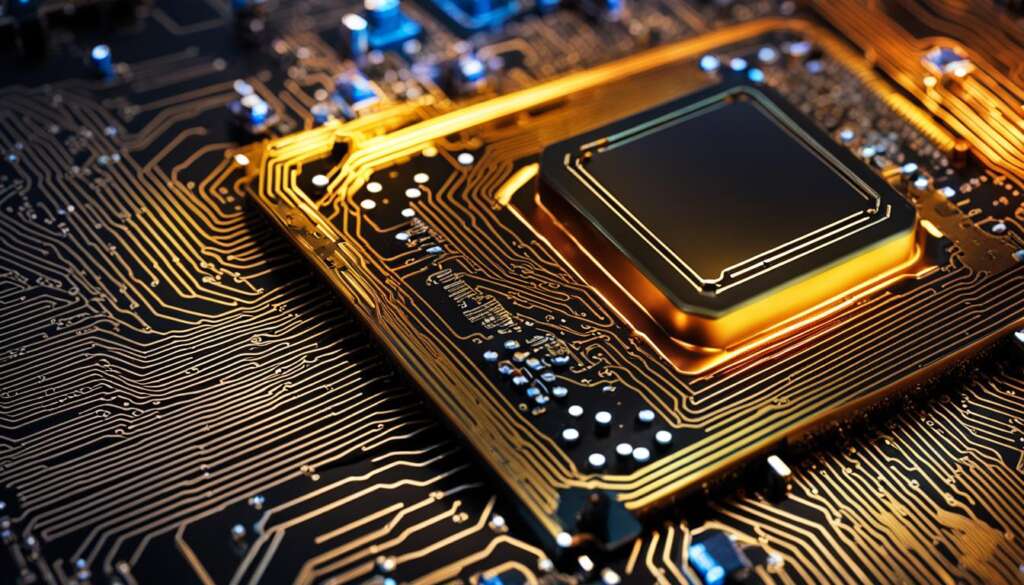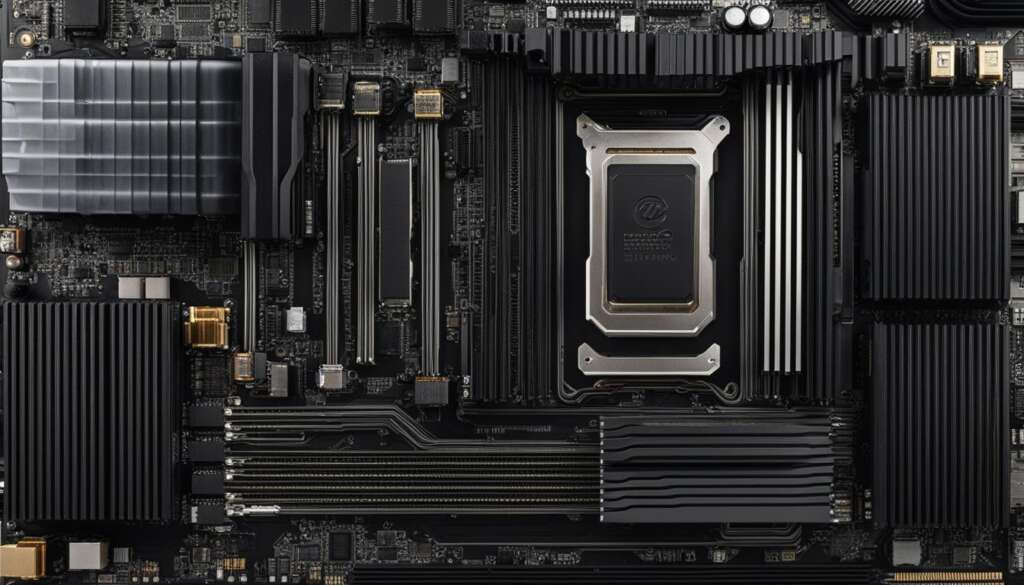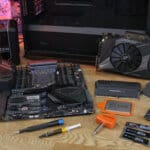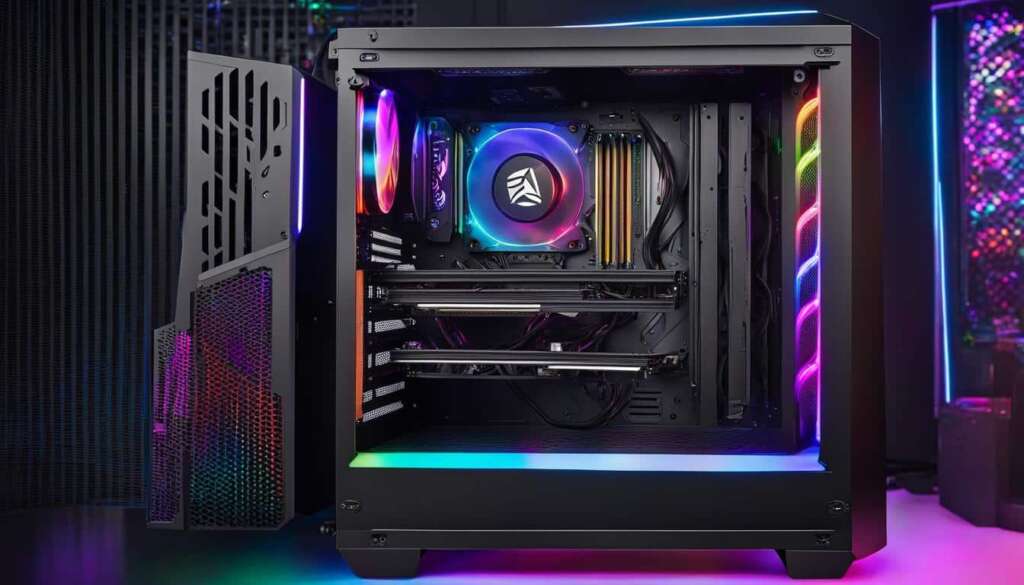Table of Contents
In today’s digital age, computer processors, also known as CPUs or central processing units, are the unsung heroes behind the seamless functioning of our devices. These small yet mighty semiconductors, often referred to as microprocessors, hold the key to unlocking incredible processing power and performance.
Imagine a chip that houses billions of transistors, capable of executing complex commands at lightning speed. This is the heart and soul of a computer processor, working tirelessly to ensure our devices run smoothly and efficiently.
The processing power of a computer processor can make or break the overall performance of a device. Strong and reliable, these chips act as the brains behind every computational task, from simple calculations to high-intensity gaming and multimedia production.
So, join us on this deep dive as we unravel the intricate world of computer processors. We’ll explore their evolution, the fascinating technology behind them, and the impact they have on our everyday computing experience. Get ready to discover the inner workings of this remarkable piece of technology!
The Evolution of the CPU
The CPU, or central processing unit, has undergone a remarkable evolution over the course of computer history. From its humble beginnings as simple collections of circuits to the intricate integrated circuits of today, the CPU has seen a constant progression in its capabilities. This progression has been driven by the vision of pioneers like John von Neumann and the advancements in semiconductor technology.
One of the critical milestones in CPU evolution was the introduction of integrated circuits. These circuits revolutionized the way CPUs were designed by packing billions of transistors onto a single chip. This miniaturization allowed for increased processing power and efficiency, making computers smaller, faster, and more accessible.
Von Neumann’s influential architecture also played a significant role in shaping the evolution of CPUs. His concept of a stored-program computer, where instructions and data are stored in the same memory, paved the way for modern CPUs. This architecture laid the foundation for the design of CPUs and influenced the development of instruction set architectures and microarchitectures.
| Era | Key Milestones |
|---|---|
| 1940s – 1950s | The first electronic computers, like ENIAC and EDVAC, were developed, using vacuum tubes and punched cards for processing and storage. |
| 1960s – 1970s | The introduction of integrated circuits brought about a significant leap in CPU technology. CPUs became smaller, more powerful, and more reliable. |
| 1980s – 1990s | The development of RISC (Reduced Instruction Set Computer) architecture and the rise of personal computers fueled the mass adoption of CPUs. |
| 2000s – Present | CPU advancements continue with multiple cores, higher clock speeds, improved microarchitecture, and the integration of advanced technologies. |
The evolution of the CPU is a testament to human progress and reflects our constant desire to push the boundaries of what is possible. As we continue to advance, the CPU will undoubtedly play a crucial role in shaping the future of computing.
The Power of Clock Speed: Understanding Hertz
One of the key factors that determine the performance of a computer processor is its clock speed, measured in Hertz (Hz). Clock speed refers to the number of electrical cycles a CPU can output per second. In simple terms, it indicates how fast the CPU can process instructions and perform calculations. The higher the clock speed, the faster the processor can carry out tasks.
Back in the early days of computing, the first computer, ENIAC, had a base clock speed of one million cycles per second, or 1 MHz. Since then, advancements in technology have led to significant increases in clock speeds. Modern CPUs can now reach speeds of up to 5 GHz, or 5 billion cycles per second. This exponential growth in clock speed has enabled computers to become more powerful and efficient.
However, it’s essential to note that clock speed alone doesn’t determine a CPU’s performance. Manufacturers have also focused on improving the efficiency of each clock cycle to ensure optimal performance. By increasing the number of calculations a CPU can perform per clock cycle, processors can achieve higher levels of processing power while consuming less electricity. This combination of increased clock speeds and improved efficiency contributes to enhanced overall performance and responsiveness of computing devices.
| Clock Speed | Cycles per Second |
|---|---|
| 1 MHz | 1,000,000 |
| 1 GHz | 1,000,000,000 |
| 2 GHz | 2,000,000,000 |
| 5 GHz | 5,000,000,000 |
As technology continues to advance, we can expect further improvements in clock speeds and greater efficiency in processing power. This translates into faster and more capable computing devices that can handle increasingly complex tasks with ease.
The Power of Cores: Multi-Core Processors
When it comes to computer processors, the number of cores plays a vital role in determining performance and efficiency. CPUs can have multiple cores, with each core acting as a miniature processor chip. Dual-core processors have two cores, quad-core processors have four, and high-end consumer processors can even have up to 64 cores.
Having multiple cores allows for multitasking, as each core can handle a separate task simultaneously. This is especially beneficial for workstations, where running multiple low-weight applications simultaneously is common. The workload is efficiently distributed among the cores, resulting in improved overall performance and responsiveness.
However, it’s important to note that not all tasks benefit from multiple cores. CPU-intensive tasks, such as rendering, video editing, and gaming, often prioritize higher clock speeds over a higher number of cores. In these scenarios, a feature called Turbo comes into play. Turbo allows a single core to clock at a much higher frequency, boosting performance for tasks that cannot be split between all the cores.
| Number of Cores | Use Case |
|---|---|
| Dual-core | Basic multitasking, web browsing, office applications |
| Quad-core | Mid-range multitasking, light content creation, gaming |
| High-core count (e.g., 16+) | Workstations, heavy multitasking, CPU-intensive tasks |
Ultimately, the number of cores in a CPU is just one factor to consider when selecting a processor. The specific workload and tasks you’ll be performing should guide your decision-making process. Whether you prioritize multitasking or require high clock speeds for CPU-intensive work, understanding the power of cores is essential for optimizing your computing experience.
The Inner Workings of CPUs
The inner workings of CPUs are a complex network of interconnected components that come together to perform the tasks that power our devices. Understanding these inner workings, including processor, instruction set, and microarchitecture, sheds light on how CPUs operate and make sense of the instructions they receive.
Processor Architecture: Processor architecture refers to the overall design and structure of a CPU. It encompasses the various components and their interconnections, such as the arithmetic logic unit (ALU), control unit, and registers. The architecture defines how these components work together to execute instructions and process data. Different processors may use different architectures, each with its own strengths and capabilities.
Instruction Set Architecture: Instruction Set Architecture (ISA) is the set of instructions that a CPU understands and can execute. It serves as the interface between software and hardware, allowing programs to communicate with the CPU. Each ISA has its own unique set of instructions, which are translated into a format that the CPU can execute. Examples of popular ISAs include x86, ARM, and MIPS.
Microarchitecture: Microarchitecture is the implementation of the ISA into a physical processor. It involves designing the various functional units of the CPU, such as the fetch unit, decode unit, and execution units, to efficiently execute the instructions defined by the ISA. Microarchitecture choices can greatly impact the performance, power efficiency, and capabilities of a CPU.
Logic Gates and Data Flow
At the heart of a CPU’s inner workings are logic gates. Logic gates are electronic circuits that perform basic logical operations, such as AND, OR, and NOT. They are the building blocks of more complex circuits within the CPU, allowing for data manipulation and decision-making. The data flow within a CPU follows a sequential path determined by the microarchitecture, ensuring that instructions are executed in the correct order and that data is processed accurately.
“The inner workings of CPUs are a symphony of precise execution and efficient data flow, orchestrated by the intricate interplay of architecture, microarchitecture, and logic gates.”
The intricate interplay of processor architecture, instruction set architecture, microarchitecture, and logic gates ensures that CPUs can perform their designated tasks efficiently and accurately. Each component plays a vital role in the overall functioning of the CPU, allowing it to execute instructions, process data, and deliver the computing power we rely on in our daily lives.
| Component | Description |
|---|---|
| Processor Architecture | The overall design and structure of a CPU |
| Instruction Set Architecture | The set of instructions that a CPU can execute |
| Microarchitecture | The implementation of the ISA into a physical processor |
| Logic Gates | Electronic circuits that perform logical operations |
The Impact of CPUs on Computing Experience
The processing power, performance, and efficiency of a CPU have a significant impact on the overall computing experience. A powerful CPU ensures smooth multitasking, faster data processing, and seamless execution of resource-intensive tasks like gaming, video editing, and animation rendering. With each advancement in CPU technology, users can enjoy improved performance and enhanced capabilities for their everyday computing needs.
When it comes to processing power, a high clock speed is crucial. Clock speed is measured in Hertz and determines the number of electrical cycles a CPU can complete per second. A higher clock speed enables faster data processing, allowing applications to run more efficiently. Additionally, CPUs with multiple cores can handle multiple tasks concurrently, enhancing multitasking capabilities and overall system responsiveness.
Efficiency is another key aspect influenced by CPUs. Modern CPUs are designed with microarchitecture that focuses on optimizing power consumption. This not only leads to improved energy efficiency but also helps reduce heat generation, leading to quieter and more reliable computing experiences. Advanced technologies, such as Intel’s Turbo Boost and AMD’s Precision Boost, further enhance CPU performance by dynamically adjusting clock speeds based on workload demands.

In summary, CPUs play a crucial role in shaping the computing experience. The processing power, performance, and efficiency of a CPU directly impact tasks like gaming, multimedia editing, and overall system responsiveness. Understanding the capabilities and advancements in CPU technology allows users to make informed decisions when selecting a CPU that meets their specific computing needs.
Conclusion
Computer processors, or CPUs, are the workhorses behind our devices. They have evolved immensely, from simple circuits to intricate integrated circuits with billions of transistors. The processing power and performance of a CPU are crucial factors in determining the overall computing experience.
Understanding the inner workings of CPUs, including their architecture, microarchitecture, and instruction sets, helps users make informed decisions when selecting a CPU for their computing needs. The clock speed and the number of cores play a vital role in the efficiency and capability of a CPU.
With each advancement in CPU technology, we witness improvements in processing power, performance, and overall computing experience. As we continue to push the boundaries of computing, computer processors will remain at the forefront, driving innovation and enabling us to achieve more with our devices.
FAQ
What is a computer processor?
A computer processor, also known as a CPU or central processing unit, is the brain of our devices. It performs all the necessary calculations and executes instructions to carry out tasks.
How have CPUs evolved over time?
CPUs have evolved from simple collections of circuits to intricate integrated circuits with billions of transistors. This evolution has resulted in increased processing power and improved efficiency.
What is clock speed, and why is it important?
Clock speed, measured in Hertz, determines how many electrical cycles a CPU can output per second. Higher clock speeds generally result in faster performance, but other factors like microarchitecture also influence overall efficiency.
What are CPU cores, and what role do they play?
CPU cores are individual processing units within a CPU. Dual-core processors have two cores, quad-core processors have four, and high-end consumer processors can have up to 64 cores. The number of cores affects multitasking capability and determines the number of tasks a CPU can handle simultaneously.
What is the architecture of a CPU?
The architecture of a CPU refers to the design and structure that allows it to understand and execute instructions. It includes components like logic gates, instruction sets, and microarchitecture, which determine how the CPU processes information.
How do CPUs impact computing experience?
CPUs play a crucial role in determining the computing experience by influencing processing power, performance, and efficiency. Faster clock speeds and more cores can handle demanding applications effectively, while efficient microarchitecture enhances energy efficiency.













